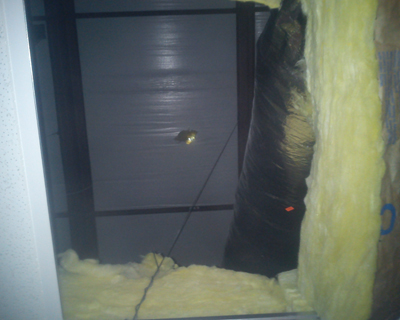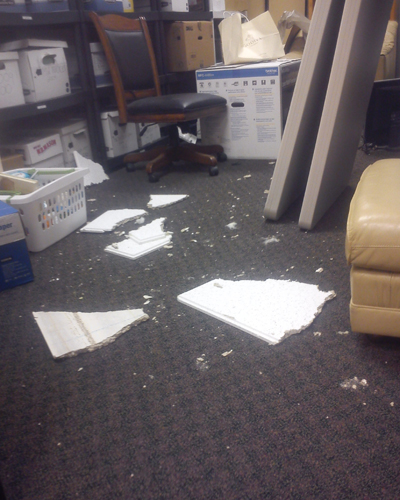Mysterious Metal Object Crashes Through Roof of Mass. Warehouse

A three-pound piece of metal was found lying on the floor of a Massachusetts warehouse on Thursday (Dec. 1). What made this remarkable was the gaping hole discovered directly above it in the roof.
"We don't know when exactly it fell, but we found it at 11 o'clock [a.m.]," Andrew McWilliams, an employee of Michael's Wholesale Furniture Distributors in Plymouth, Mass., told Life's Little Mysteries.
The chunk of metal appears about the same size and shape as a tall, skinny soda can, but the silvery cylinder has a tarnished look to it.
The workers reported their find to the Federal Aviation Administration (FAA), which promptly sent an inspector to investigate. All parties initially guessed that the piece of metal may have fallen off a passing plane, but the FAA later ruled out that possibility, according to CBS Boston.
"We have no idea what it is. At this point, we can only speculate. No clue," said Plymouth police Capt. John Rogers. "This would have had to come through with some significant force or velocity to get through the warehouse roof and cause damage." [See the damage]
One possibility is that the metal chunk may have fallen from space. There are approximately 20,000 bits of manmade space junk in low-Earth orbit that are as big as or bigger than the chunk that crashed through the warehouse. These usually burn up during re-entry when they fall into Earth's atmosphere, but sizable pieces occasionally make it to the ground.
McWilliams said the FAA "confiscated" the piece of debris and is continuing to investigate its source.
Get the world’s most fascinating discoveries delivered straight to your inbox.
Follow Natalie Wolchover on Twitter @nattyover. Follow Life's Little Mysteries on Twitter @llmysteries, then join us on Facebook.
Natalie Wolchover was a staff writer for Live Science from 2010 to 2012 and is currently a senior physics writer and editor for Quanta Magazine. She holds a bachelor's degree in physics from Tufts University and has studied physics at the University of California, Berkeley. Along with the staff of Quanta, Wolchover won the 2022 Pulitzer Prize for explanatory writing for her work on the building of the James Webb Space Telescope. Her work has also appeared in the The Best American Science and Nature Writing and The Best Writing on Mathematics, Nature, The New Yorker and Popular Science. She was the 2016 winner of the Evert Clark/Seth Payne Award, an annual prize for young science journalists, as well as the winner of the 2017 Science Communication Award for the American Institute of Physics.




